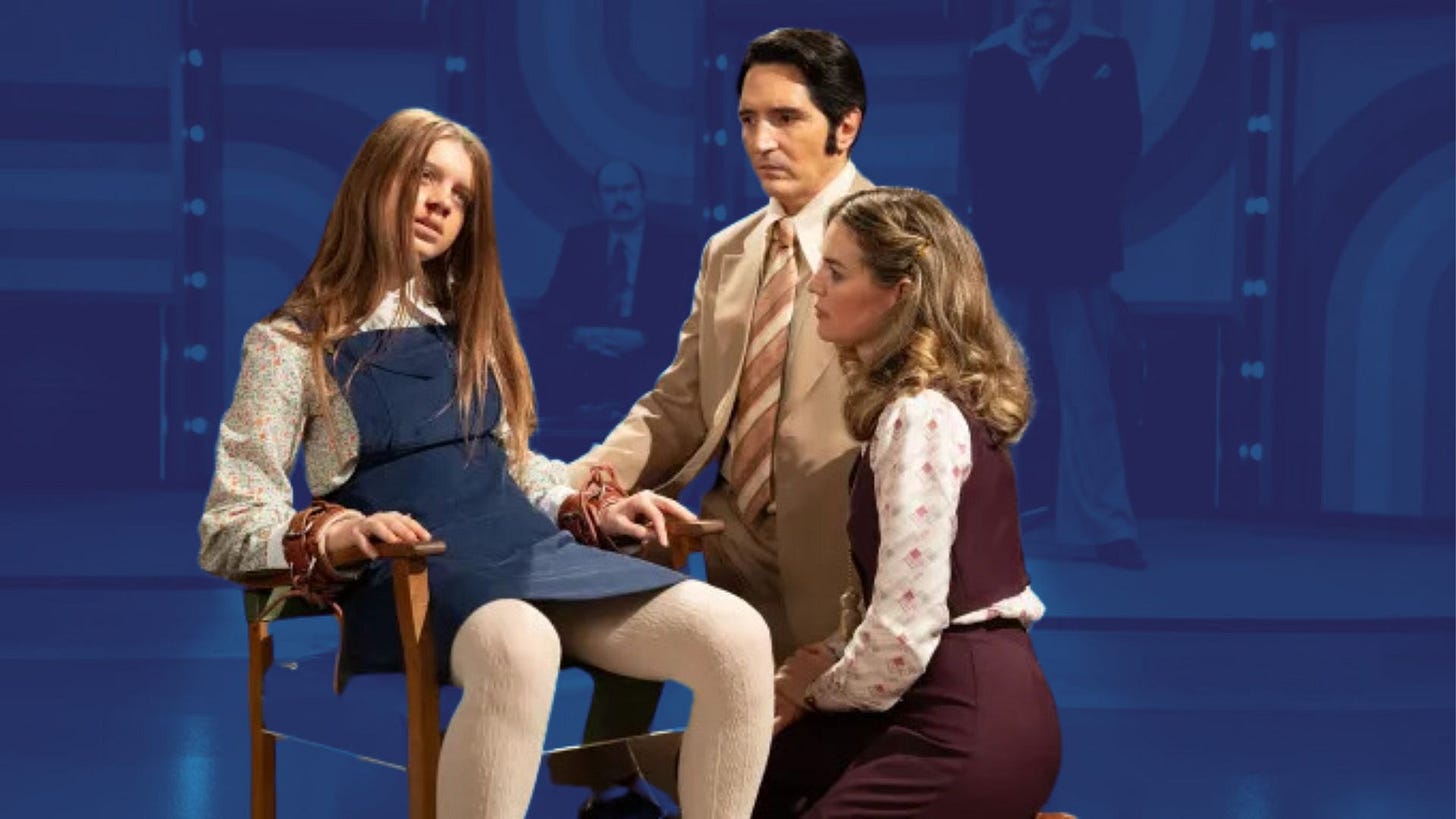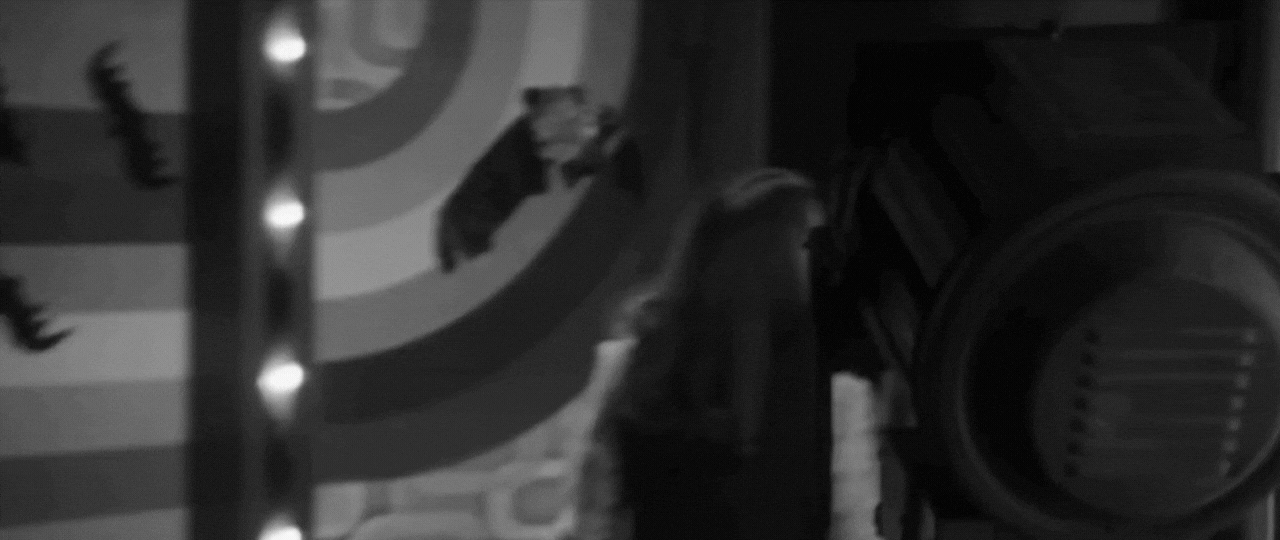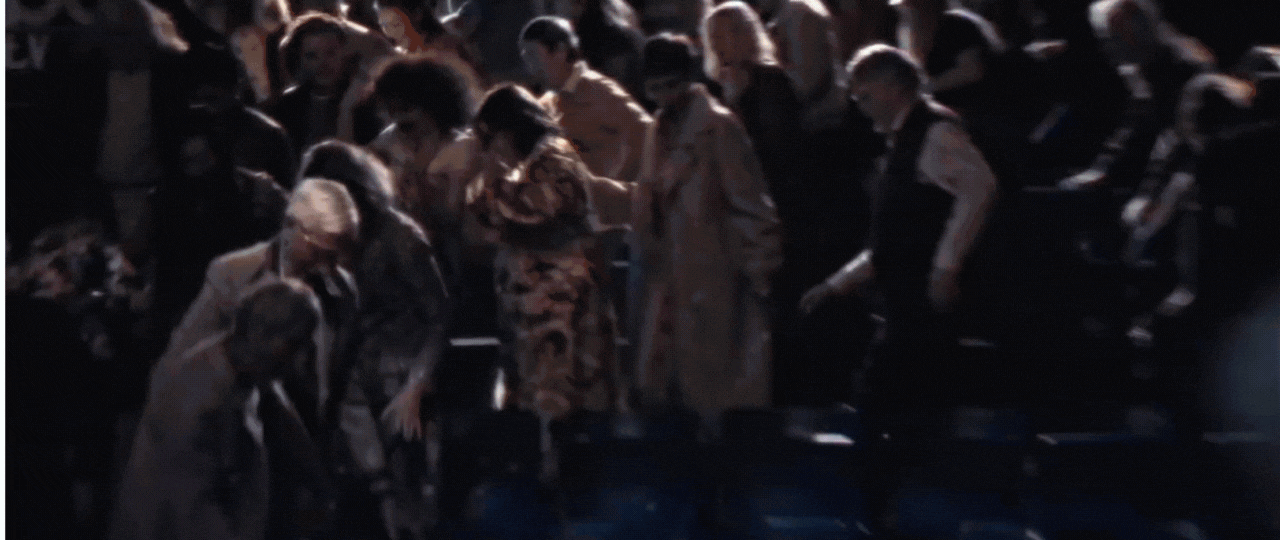Who Found This Footage?
Late Night with the Devil's Inconsistent Use of the Found Footage Format
Late Night with the Devil is a 2023 found footage horror film in which “Johnny Carson rival Jack Delroy hosts a syndicated talk show ‘Night Owls’ [and] plans a Halloween special like no other- unaware he is about to unleash evil into the living rooms of America (IFC Films).” The film was met with a flurry of news upon release, thanks in no small part to the revelation that generative A.I. was used to help several interstitial photos that show up periodically throughout.
The use of A.I. was both frustrating and unnecessary, but its (admittedly minuscule) presence isn’t what I want to discuss here. Instead, I want to focus on the film’s self-imposed form as a found footage film. For those unfamiliar with the concept, a found footage film “is a subgenre in which all or a substantial part of the film is presented as if it were discovered film or video recordings, often left behind by missing or dead protagonists. This genre of filmmaking aims to give the audience a sense of authenticity and immediacy, often blurring the line between fiction and reality (Studio Binder).”
Late Night with the Devil takes great advantage of the tools in this subgenre to create a uniquely scary and captivating film. But I also often found it to frequently “cheat” the format by bending or breaking the rules of found footage filmmaking, often to the film’s own disadvantage. Let’s take a look at what worked for me and what didn’t.
How It’s Used Correctly
For starters, I can’t say enough good things about David Dastmalchian’s incredible leading performance as Jack Delroy, mimicking the easy-going suave and approachable demeanor of classic late night hosts. I love the way in which he portrays his character’s mental state slowly deteriorating with increasing discomfort on air, despite still putting up a false front of confidence. The dead-eyed smiles, the breaks in his voice, the quick side-eyes, every tick and mannerism adds to the viewer’s own unease as the tension grows, and it’s incredible to see Dastmalchian do so much with the material.
The late night show format itself is fun to watch, a necessity for a film committing to this style. I was curious to what lengths the film would try to imitate a typical talk show, and the answer is, in great detail. The production design, costuming, and extras all place us right in this setting, but the screenplay also goes to great lengths to put us in familiar territory.
We open with typical formalities, thank you’s and banter with the band and show “sidekick.” Then we get an opening monologue, complete with period-appropriate jokes, and an introduction to that night’s guests. Even each segment of the film, while clearly built to increase tension and rising action, feels exactly like the types of interviews and performance segments we’d watch on any other late night show. It’s a commitment to the format that I found both convincing and effective. This wasn’t just a horror film that used a talk show as a jumping point - it was using the talk show as the means of communicating horror.
On that note, I found the film’s editing to provide a nice contrast to the strictness of the show format. Even though the “show” is playing out in real time in the film, the edit provides us with some interesting angles and reaction shots to provide unease. We get cuts and holds that are atypical for talk shows, from strange glances from audience members, to lingering holds on Dastmalchian, or even the demon-possessed Lilly (Ingrid Torelli) staring directly at the camera. The tension between the expected “bits” of the format and the unexpected editing choices really heightens the horror and created a sense of dread from the get-go.
This editing was a break from typical talk show “form,” but I found it to be both a subtle and effective break, one that may even go unnoticed by first-time viewers. But that leads me to the other breaks from form that I found much more distracting and less effective…
How It Breaks Form
The film’s incredible dedication to replicating the talk show format made it all the more frustrating when it didn’t follow that format.
When the talk show would go to commercials, the film would cut to “behind the scenes” footage. This footage was often helpful in fleshing out the character motivations, from Delroy talking with his agent about the show ratings, to guest star and parapsychologist June Ross-Mitchell voicing her discomfort over possibly performing an on-air seance.
However, I found the way in which these segments were shot to be inconsistent. If this was true “behind the scenes footage,” one would expect wide, possibly obfuscated shots as the film crew attempts to stay out of its subjects’ way, and shaky camera movements with sudden zooms and whips from crew members having to follow their subjects backstage. Viewers have no doubt seen countless great examples of these techniques, the former captured beautifully in 2023’s BlackBerry and the latter captured in any number of mockumentary shows or movies, such as the popular television series, The Office.
But in Late Night with the Devil, these techniques (or any number of alternatives) are often absent during the “behind the scenes” segments. Many conversations are captured in a basic medium shot-reverse shot or simply just camera angles that would have been too intrusive for backstage filming, reminiscent more of standard Hollywood staging than organic “real” footage. For a film that spent so much attention-to-detail in capturing the feel of a late night television show, these additional scenes often broke the illusion and made the drama feel fabricated, the opposite intent of the authenticity that found footage films should strive for.
That’s not to say these techniques were always disregarded! At its best moments, the behind the scenes clips would use handheld cameras and obscured angles to make the viewer feel like an observer of a secret conversation, such as the above scene between Delroy and Ross-Mitchell. Moments like these are great at both providing character motivation and keeping within the confines of your format.
I also found it to be a missed opportunity not to simply focus more on showing fake commercials from the broadcast. The film does a terrific job reflecting on the price people often pay for success, and the way in which the industry often exploits pain and suffering for entertainment. With the broadcast constantly cutting to commercials amidst horrifying imagery and events, the film could have really hammered home its message by literally showing us those commercials on occasion, forcing the viewer to deal with the jarring tonal shifts and sit with the unease of that dichotomy.
Another interesting break from form comes in the film’s makeup and special effects. Late Night with the Devil opts to use throwback makeup and effects, with everything from old-timey hand-drawn electricity crackles to caked-on horror makeup during the possession, reminiscent of The Exorcist. While well-done and entertaining, I found this to be the wrong application of period-appropriate techniques. If this is a found footage film and the events “really” happened, the makeup and effects should look as realistic as possible, not be a throwback to 70s Hollywood filmmaking.
All these inconsistencies come to a head in the film’s mind-bending finale, a jarring break from the talk show format to put us inside the head of Jack Delroy as he experiences rapid visions of the past and nightmarish warps of his present reality. Admittedly it makes for incredibly effective horror and provides a natural conclusion to the film’s themes, but cheating the found footage format detracts from the final product. Even if the filmmakers wanted to showcase a hallucinatory fever dream in the finale, why not do so within the appearance of the talk show? Utilizing the same shot angles and blocking as the rest of the film could potentially provide even greater horror at the events transpiring onscreen.
I’ve pointed out some flaws in the format, but I truly enjoyed Late Night with the Devil. From the unique concept to the pitch perfect performances to the rich themes, there’s a lot to digest and enjoy. A college professor once told me, “you have to know the rules in order to break them.” Filmmaking isn’t just about following rules, it’s about knowing them and then choosing whether to adhere to them or to try something new. The Late Night with the Devil filmmakers ultimately made their decisions on what rules of found footage to keep and what to break, and it led to a great final product.






